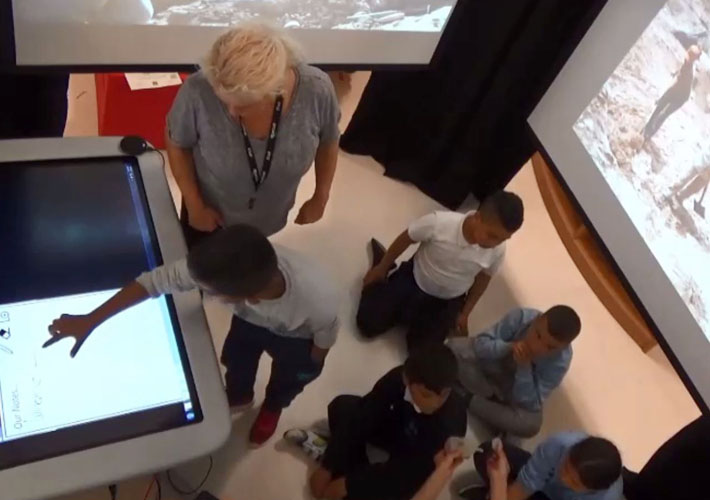WG3a Overview of enquiries
Overview of enquiries (Newcastle)

All enquiry software, media packages, and guidance documents are available as free resources to download.
Two enquiries are now in use in Newcastle:
- Enquiry 1 Great Fire of Newcastle and Gateshea. A modern day fire chief greets the children and asks their help to find out about Alexander Dobson and his link with the 1854 Great Fire of Newcastle and Gateshead. The children take on the role of fire investigators and must decide who was responsible for the fire. They travel back in time to 1854 and meet 5 characters (Fireman Scott, architect John Dobson, warehouse owner Edward Moore, poor local resident Sarah Goodfellow, and rich tourist Jane Ridley), who each tell the children their opinions about the fire. When the children return to the present day they tell the fire chief who Alexander Dobson was (son of famous architect John Dobson), whether he died in the Great Fire (yes), and who they think was responsible for the fire (opinion question); children then decide which of the 5 characters they think was responsible for the death of Alexander Dobson. Even now, historians and other experts have no clear answers about who was to blame for the Great Fire, so this enquiry supports children to explore opinions and evaluate evidence. Each character speaks in English and then repeats their dialogue in an additional language, currently set as Slovak/East Slovak Roma. The children vote to decide in which order to meet the characters, and each character sets the children interactive tasks related to the information they provided.
- Enquiry 2 Ancient Mesopotamia. The children’s ‘Aunt Teresa’ contacts them via video link from her archaeological dig in modern Baghdad. She gives the children an object and asks their help to find out what it is, who owned it, and what life was like for people living in ancient Baghdad. The children travel to the dig site in Baghdad, including seeing some protestors who want to keep archaeological treasures in Iraq not take them out of the country, and then go back in time to Ancient Mesopotamia. They meet 3 characters (Ahuni the poor slave child, Adapa the rich merchant, and Moumis the priest), who each tell the children about their lifestyles and suggest what the object could be. When the children return to the present day Aunt Teresa asks them to answer her earlier questions, and also asks the children whether they want to put her gift in the Baghdad Museum or keep it in their country. This supports children to consider ethical dilemmas about the safe keeping or looting of historical artefacts, as well as exploring opinions and evaluating evidence. Each character speaks in English and then repeats their dialogue in an additional language, currently set as Slovak/East Slovak Roma. The children vote to decide in which order to meet the characters, and each character sets the children interactive tasks related to the information they provided.
Two further enquiries have been created:
- Enquiry 3 Minibeasts. The children meet Rosa the gardener and discuss what jobs she does in her garden. Rosa explains that she is not happy with her garden and asks the children’s help to find out which minibeast is most helpful to the garden. The children become garden explorers and are shrunk (the images on screen appear magnified) to more clearly see what is happening. The gardener shows the children 6 minibeasts (bee, caterpillar, aphids, worm, mosquito, ladybird) and explains what they do and where they live. Meeting each minibeast triggers an interactive task. This supports children to evaluate information. Each character speaks in English and then repeats their dialogue in an additional language, currently set as Romanian/Ursari Roma, and will also feature Slovak/Czech Vlax. The children vote to decide in which order the minibeasts appear.
- Enquiry 4 Transitions from primary to secondary school. The children enter Excelsior Academy (secondary school). They meet the headteacher, who greets them as if they are a new Teaching Assistant at the school. The headteacher asks the TA to fill in missing timetable information about the school day. They visit 5 areas within the school (registration, gym, languages, school uniform check, drama auditions) in a set order, and in each area a teacher gives them a task to do. After the fifth area they go to the headteacher’s office; the headteacher asks if they completed the timetable and whether they enjoyed their morning. This supports children to understand how secondary school differs from primary school, particularly in terms of: moving between different areas of the school, having different teachers for different subjects, being in a busy and crowded environment. Each character speaks in English and then repeats their dialogue in an additional language, currently set as Romanian/Ursari Roma.


300px-120x66.jpg)
 (2)-161x67.jpg)


